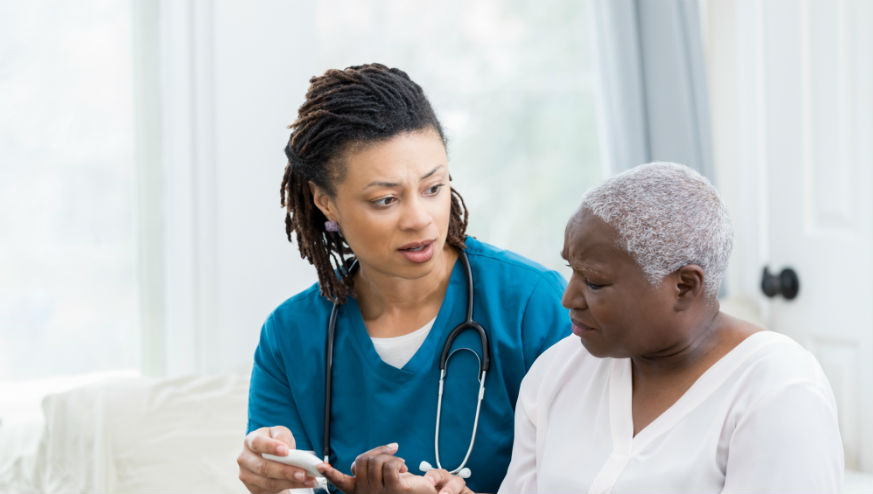November starts this month, and brings with it National Diabetes Awareness month. According to the In 2015, 30.3 million Americans, or 9.4% of the population, had diabetes. To understand more about the condition, we spoke with Dr. Grenye O’Malley and Dr. Deena Adimoolam, both assistant professors of medicine, endocrinology, diabetes and bone disease at the Icahn School of Medicine at Mount Sinai.
Ask Mount Sinai: Understanding diabetes

Photo Credit: iStock
What’s the difference between Type 1 and Type 2 diabetes?
Dr. O’Malley: Your pancreas makes insulin which then tells your other organs how to adjust how much sugar is in your blood. In Type 1 diabetes, the pancreas is not making any insulin. This is usually due to an autoimmune process where your body makes antibodies and attacks the pancreas. People with Type 1 diabetes need to give themselves insulin since they are not making it themselves. Type 2 diabetes is due to the other organs not listening to the insulin – we call this insulin resistance. The pancreas tries to make more insulin to overcome the resistance, but eventually, it cannot make enough. Type 2 diabetes can be managed by eating fewer carbohydrates and losing weight. The pills we use to treat Type 2 diabetes can tell the pancreas to make more insulin or affect how the other organs are managing the sugar in the blood. Some people with Type 2 diabetes need extra insulin to help keep their sugars at goal. Type 1 diabetes used to be called juvenile diabetes, however, it can be diagnosed in adulthood, and Type 2 diabetes rates in children are rising, so people at any age can get either type.
If managed well enough, can diabetes go into remission? Can you be cured?
Dr. O’Malley: In some people, if Type 2 diabetes is managed well enough, they can stop medications and have sugars which are at goal. This is achieved through lifestyle changes and weight loss. It is not a cure, however, because the diabetes is still being treated by a healthy diet and exercise, and high sugars will come back if you eat a lot of carbohydrates or gain back weight. Research is being done to try to regrow pancreas cells to cure Type 1 diabetes, but we aren’t there yet.
What are the essential health check-ups people at risk, and for people who have a diagnosis?
Dr. O’Malley: People are at risk of Type 2 diabetes if they have family members with diabetes, have a history of gestational diabetes, have other hormone disorders such as polycystic ovarian syndrome, or are overweight or obese. If you are at risk, your doctor can check your blood to see what your blood sugar is on the day of your visit. Your doctor can also do a blood test which gives us an estimation of what blood sugar has been for the past 3 months. This is called a hemoglobin A1C.
For people who have diabetes, the main goal is to prevent high sugars from hurting your other organs. We check how well the kidneys are doing through urine and blood tests. You should also have periodic examinations of your feet and eyes. Since diabetes can affect your heart, we make sure that your blood pressure and cholesterol are doing well. If you have type 1 diabetes, we also check to see if you have other conditions that are also autoimmune.
What is prediabetes? If you are prediabetic, can you avoid becoming a diabetic? How?
Dr. O’Malley: Prediabetes is when your blood sugars are elevated but not as high as in diabetes. People who have slightly high blood sugars are more likely to develop diabetes. If you are pre-diabetic, you can avoid diabetes by losing weight, decreasing how many carbohydrates you eat, and exercising. Losing 7% of your body weight can lower your risk of developing diabetes. There are also some medications which can help prevent becoming diabetic if lifestyle changes are not enough.
What are some common misconceptions about diabetes?
Dr. Adimoolam: There are many misconceptions about diabetes risk factors, symptoms, healthy foods and more that could affect how diabetes patients take care of themselves. Where to start, there are too many to name. But the one I hate the most is “there is no cure for Type 2 diabetes.” Type 2 diabetes is a progressive disease, and most people with it eventually need insulin. By using insulin to keep their diabetes in good control, people with Type 2 can often avoid complications and lead a healthy life.
Obesity is a risk factor, but can non-obese people develop diabetes get diabetes?
Dr. Adimoolam: Yes. There are many different types of diabetes that can develop in non-obese patients. Non-obese people can develop Type 2 diabetes due to genetics, certain gene mutations, medications (like steroids) and other medical conditions (especially those that significantly damage the pancreas, like cystic fibrosis).
On the opposite end: Will all obese people develop diabetes?
Dr. Adimoolam: Though obesity is a risk factor for Type 2 diabetes, not ALL obese people will develop Type 2 diabetes. There are some lucky obese people who are considered as “metabolically healthy” who do not develop Type 2 diabetes, high cholesterol, etc.
What can people who have a diagnosis do to manage their diabetes well?
Dr. Adimoolam: Seek medical attention right away once a diagnosis is made. Even Pre-diabetes needs to be taken seriously. There are too many people that find out they are “borderline” diabetic and never seek treatment or help because they think it will go away or it’s not serious enough. There is a potential to cure Type 2 Diabetes if treated early. Get the help that you need by visiting your doctor. Treatment for diabetes requires keeping close watch over your blood sugar levels with a combination of medications, exercise and diet. Each plan is tailored for the person and can be adjusted based on what you eat and how much you exercise, as well as for times of stress and illness.
























